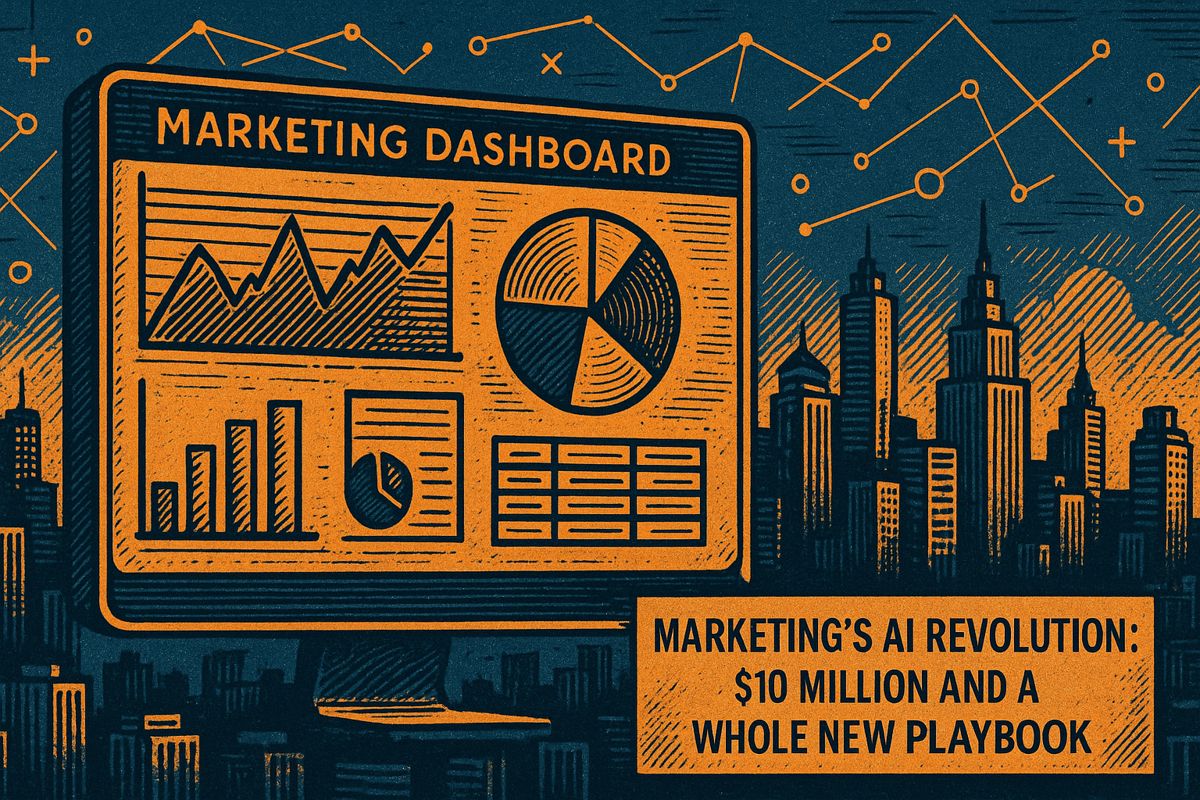Choosing a CMS in 2025 is all about speed and ease for content teams. Look for a system where marketers can quickly edit pages without coding, and that has powerful AI to help write and test content faster. Make sure the CMS gives a live demo, has smart AI tools right inside the editor, and delivers fast loading speeds everywhere. Only pick a platform that easily checks all these boxes, or move on to the next.
What are the key factors to consider when selecting a CMS in 2025 for maximizing content velocity?
To maximize content velocity in 2025, select a CMS that enables marketers to visually edit pages without code, offers built-in AI to accelerate writing and testing, and ensures Core Web Vitals performance out-of-the-box. Prioritize platforms that provide live demonstrations, integrated AI, and performance validation.
A practical 2025 CMS selection playbook is no longer about feature checklists – it is about three daily realities that will make or break your content velocity:
- Can marketers edit pages visually without tickets and code?
- Does built-in AI actually speed up writing, tagging and testing?
- Will the platform pass Core Web Vitals out-of-the-box in every market?
Below is a field-tested framework that translates these questions into concrete evaluation tasks, drawing on the latest market data and the new Sitecore selection guide.
1. Visual editing: demand a 5-minute live demo
| What to look for | Green flag | Red flag |
|---|---|---|
| True WYSIWYG on production components | Changes appear instantly in live preview | “Static image” or iframe sandbox |
| Governance controls | Role-based locks, approval flows | Anyone can publish anything |
| Headless support | Visual editor on top of APIs | Separate demo builder only |
In 2025 headless stacks, *Storyblok * leads visual editing for marketers, offering drag-and-drop layout and inline image tools atop any API (Hygraph 2025 roundup). Test the workflow by building a localized landing page in under five minutes – if it breaks, move on.
2. AI integration: score by “closed-loop value”
Most vendors now ship AI assistants, yet only a few embed the models inside the authoring canvas. Evaluate with this scorecard:
| Capability | How to test | Weight |
|---|---|---|
| In-editor content suggestions | Rewrite headline, translate paragraph, check tone | 30 % |
| Auto-tagging & meta generation | Upload 10 images, review accuracy | 20 % |
| Audience/variant recommendations | Launch A/B test, inspect AI segments | 25 % |
| Performance feedback loop | Does AI learn from analytics events? | 25 % |
Platforms such as Optimizely , Adobe Sensei and Sitecore XM Cloud weave AI into personalization and testing loops, reportedly raising content velocity 25-40 % in pilot programs (2025 DXP comparison). Ask for proof-of-concept dashboards before signing.
3. Performance: a pass-fail filter
Core Web Vitals (CWV) are now a ranking factor for all form factors. Use these 2025 benchmarks:
| Metric | Threshold | CMS average pass rate |
|---|---|---|
| LCP (Largest Contentful Paint) | < 2.5 s | 38 % of traditional CMS |
| INP (Interaction to Next Paint) | < 200 ms | 31 % pass globally |
| CLS (Cumulative Layout Shift) | < 0.1 | 70 % pass |
Choose architectures that ship at the edge – global CDN plus serverless rendering – to hit these numbers without custom engineering. A headless stack with build-time SSG and edge caching can cut LCP by 40-60 % versus legacy monoliths (Search Engine Journal 2025 data).
Quick selection checklist (print and use)
- [ ] Visual demo completed – non-developer published a page in < 5 min.
- [ ] AI bake-off results – measurable lift in drafts/day or test velocity.
- [ ] CWV validation – origin passes LCP & INP on mobile via CrUX.
- [ ] TCO sanity check – hosting, AI usage, front-end costs itemized.
- [ ] Migration roadmap – staged cut-over with rollback plan.
Cut through vendor noise by insisting on live proofs in these three areas. If a platform cannot demonstrate them, the feature list is irrelevant.
Choosing the right CMS in 2025 feels overwhelming because the field is noisy. Vendors flood marketing channels with feature lists, but those lists rarely answer the one question that matters: “Will this platform let my team ship content faster without breaking performance?”
The new 2025 CMS Selection Playbook from Sitecore cuts through that noise by focusing on three practical pillars – visual editing, integrated AI, and performance – instead of traditional RFP check-boxes. Below are the five questions we hear most often from teams evaluating platforms this year, answered strictly with guidance from the playbook and corroborated by 2025 market data.
How do we know visual editing is worth prioritising over developer-centric workflows?
Because non-technical marketers are now the primary content producers. A 2025 buyer’s guide by Hygraph (a competitor) ranks headless CMS platforms and singles out Storyblok as the “best visual editor for marketers”, praising its drag-and-drop components, live preview, and inline image editing – precisely the capabilities the playbook recommends testing.
Takeaway: When vendors demo visual editing, insist on true WYSIWYG on production components, role-based governance, and device/locale preview parity. Anything less will slow your velocity.
What does “integrated AI” actually mean in 2025 – isn’t it just text generation?
Not any more. Leading DXPs embed AI across the entire content lifecycle:
- Authoring: in-editor suggestions, tone/rewrite, auto-tagging
- Personalisation: audience recommendations, next-best-offer prediction
- Optimisation: A/B test ideation, predictive analytics
In 2025, Adobe Experience Manager bundles AI via Adobe Sensei, while Optimizely couples AI recommendations with built-in experimentation. The playbook stresses testing AI on embeddedness (in-editor vs external) and governance (data privacy, model explainability) rather than feature count.
Which performance metrics should we benchmark before choosing?
Core Web Vitals (CWV) pass rates and Interaction to Next Paint (INP).
The August 2025 CWV Technology Report (CrUX + HTTP Archive) shows wide variance among CMS ecosystems. INP has emerged as a leading differentiator because traditional LCP scores alone do not capture responsive interactivity. Edge delivery – global CDN caching, serverless rendering, and image optimisation – is now the fastest way to improve both.
During evaluations:
- Measure TTFB, LCP, and API latency with realistic traffic
- Verify built-in edge/CDN, image policies, and observability dashboards
Does headless always perform better than traditional coupled CMS?
Only when edge delivery is part of the stack. Headless architectures (ISR, SSG) paired with global CDNs outperform monolithic stacks if teams also implement:
- Edge SSR/streaming to reduce hydration delays
- Code-splitting to improve INP
- Regional cache segmentation to maintain high cache-hit rates without cache-busting
The playbook recommends proof-of-concept bake-offs: build a localised landing page, run an A/B test, and measure LCP under CDN load. Results surface practical differences in days, not months.
How do we future-proof against 2026 upgrade costs?
Choose SaaS-first, composable platforms. Analyst forecasts point to 11.7 % CAGR in the DXP market through 2030, driven by agentic AI automating workflow orchestration. Platforms that offer staged migration paths (e.g., Sitecore XM Cloud’s SaaS model vs on-prem XP) reduce operational overhead and upgrade risk while keeping visual editing, AI, and performance tooling current.
Quick checklist beyond the three pillars
- Governance: roles, workflows, approval gates, auditability
- Integration: APIs, webhooks, marketplace depth
- TCO: SaaS vs self-managed, front-end hosting, migration tooling
- Observability: built-in analytics and error tracking across edge and front-end runtimes
Use the playbook’s framework to score each vendor on real workflows, scalability, and total experience delivery – not feature counts.



















